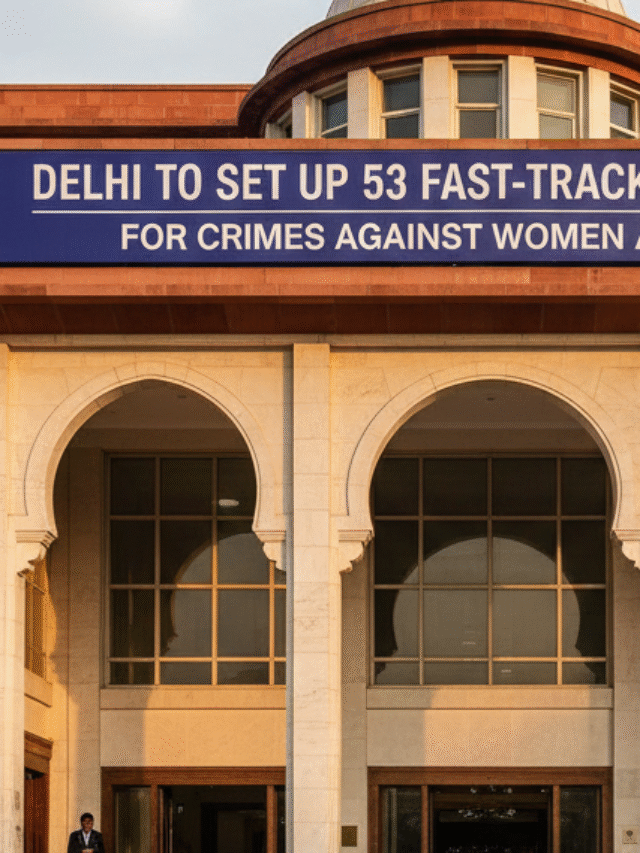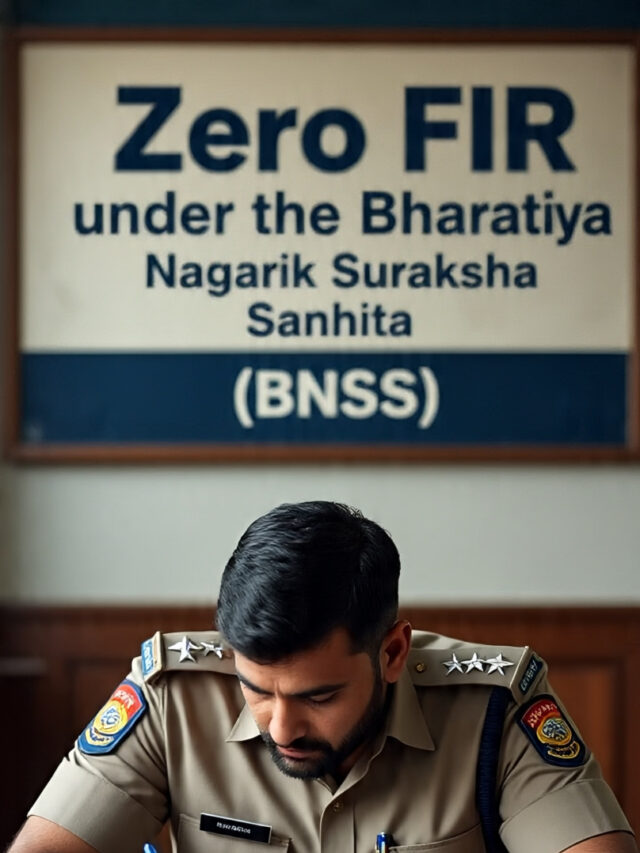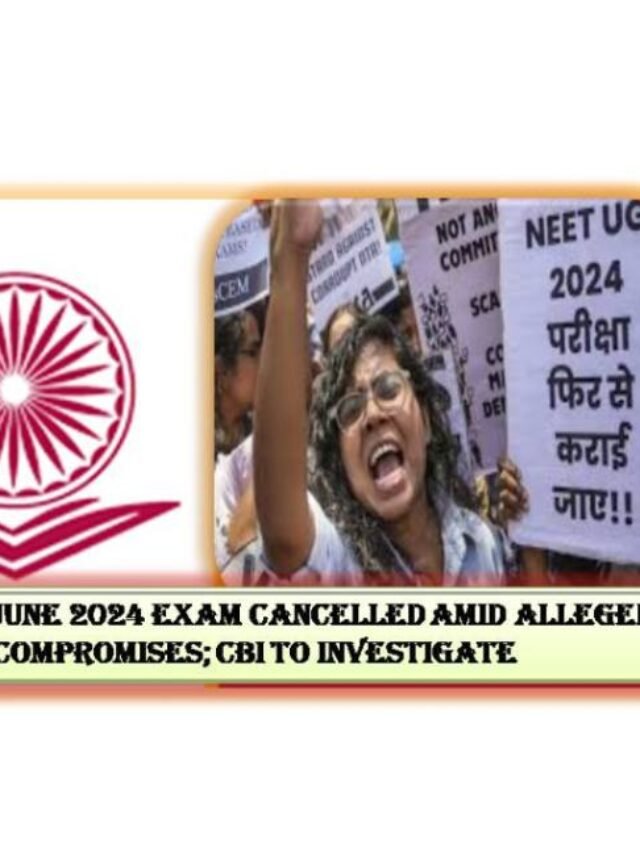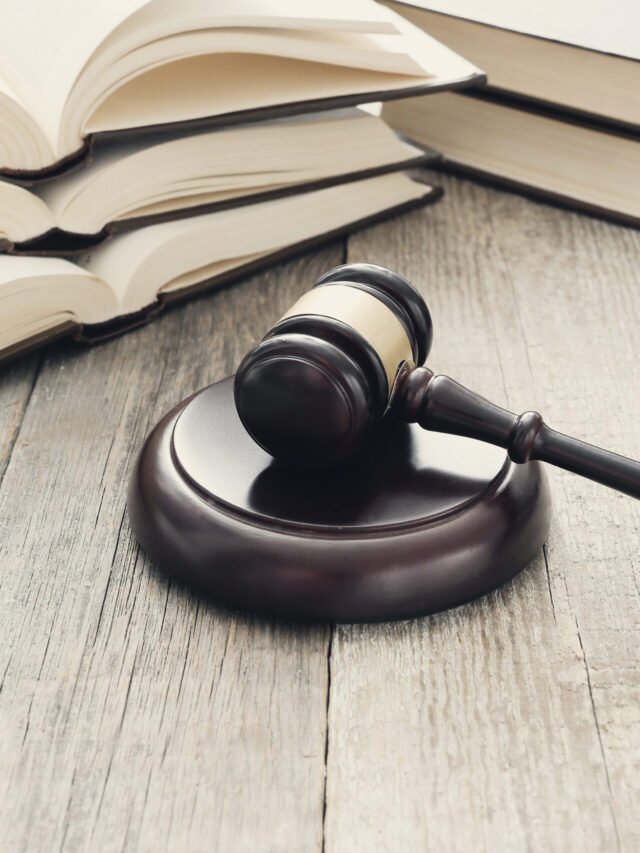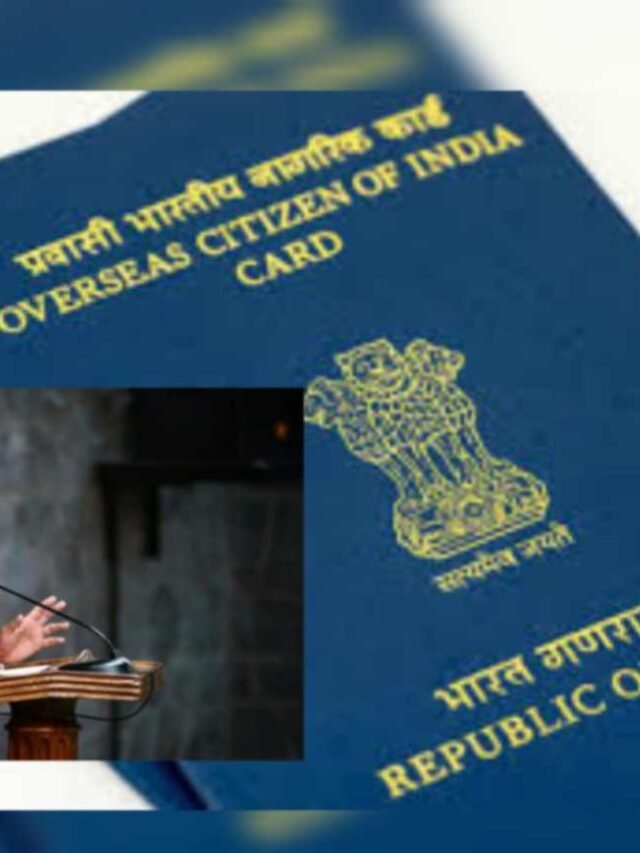Impact of Media Trial and Freedom of Expression in India
Introduction
The phrase “Trial by Media” has gained prominence in recent decades, describing the influence of television and print media on legal cases, often holding the accused guilty even before their trial and regardless of court verdicts. In India, the criminal justice system is based on the principle that an accused is innocent until proven guilty beyond a reasonable doubt. However, media coverage can affect this principle by presenting interviews with witnesses, victims’ relatives, and legal experts, potentially prejudicing the trial process and the public’s perception of the case.
Media Influence on Access to Justice
Over the last decade, media influence has grown significantly, particularly in cases involving corruption, rape, murder, sexual harassment, and terrorism. Media activism exerts indirect pressure on the judiciary to ensure justice for victims, which can interfere with the trial process and prejudice the accused’s chance of proving innocence. “Trial by media” refers to the widespread perception of guilt created by newspapers and television, irrespective of court verdicts.
Freedom of Media as Freedom of the People
Freedom of media is considered a cornerstone of democracy, allowing citizens to stay informed. However, today’s media is so powerful that it often shapes public opinion without questioning the authenticity of the information. This overlooks the fundamental principle of Indian trials: “Guilty beyond reasonable doubt” and “Innocent until proven guilty.”
Media Maligning and Prejudicing Suspects
In pursuit of higher viewership, the media can tarnish the image of mere suspects, branding them as guilty before any court decision is made. The media tends to focus on one side of the story, fueling public outrage without seeking the truth. This one-sided approach can be detrimental, as the media wields great influence over the public.
Newspapers, news channels, radio, and television not only disseminate information but also control the narratives that the public discusses. Extensive coverage of crimes can pose challenges for prosecutors and attorneys, affecting the legal process. Both the judiciary and media aim to discover the truth, uphold democratic values, and address social, political, and economic issues.
Media and the judiciary share a common goal of seeking justice and serving society. Media is often referred to as the “handmaiden of justice” and the “watchdog of society,” while the judiciary dispenses justice and catalyzes social reforms. However, these two pillars of democracy can clash at times.
Under the fundamental right of freedom of speech and expression, the media has the right to investigate, reveal, expose, and highlight criminal cases. It argues that in a democracy, people have the right to know. However, the judiciary is equally aware of the accused’s right to a fair trial. Balancing these competing fundamental rights is crucial, as pre-trial publicity can disrupt a fair and speedy trial.
Media’s Role in Democracy
Media is considered one of the pillars of democracy, with the power to shape public opinion and influence how people perceive events. It has initiated a trend in which the media actively plays a role in exposing accused individuals. Freedom of expression, enshrined in India’s Constitution under Article 19(1)(a), is a vital right, encompassing the freedom of the press. However, this right is not absolute and can be restricted by law in the interest of various factors, including national sovereignty, security, public order, and contempt of court, among others.
Media’s Impact on Prejudging Legal Cases
Media coverage often leads people to form premature judgments about the outcomes of criminal proceedings. Some individuals even use the media to manipulate court cases. In media trials, the media functions as a conduit for public sentiment and sometimes even attempts to deliver elements of justice outside the courtroom.
The media is a fundamental pillar of democracy worldwide, playing various roles in society, including shaping public opinions and influencing how people perceive specific events. In recent times, the media has actively advocated for the trial of accused individuals. A healthy and free media is essential for the proper functioning of democracy. Court cases widely covered by the media tend to conclude relatively quickly.
Defining Media Trial
Trial is a legal process that should be conducted by the courts. Trial by media is seen as undue interference in the justice delivery process. Before discussing the justifiability of media trials, it’s crucial to define what “trial by media” actually means. Trial is a concept closely associated with the administration of justice.
It is a fundamental aspect of any judicial system that the accused receives a fair trial. In India, there is a strong curiosity about sensational and high-profile cases, and people often collect information from newspapers, news websites, and channels to form their own opinions. This is known as investigative journalism, which is permissible in India. Media holds the power to influence public perceptions and shape opinions, whether regarding guilt or innocence, which is what trial by media, or media trial, refers to.
Media trials are not just a legal concern but also a political issue. They can divert legal proceedings from their intended course while distracting the public from critical matters such as economic challenges, unemployment, and decreasing freedoms. Authoritarian regimes often use media as a tool for distraction. Maintaining democracy requires ongoing vigilance.
Notably, Justice Kurian Joseph of the Supreme Court of India expressed concern about the pressure on judges during the Nirbhaya rape case. He urged that media trials in pending cases be avoided to reduce the strain on judges. He emphasized that trying cases in the media creates significant pressure on judges, who are human beings, and noted that the media had already passed its verdict in many cases.
Litigation isn’t solely about seeking the truth; it’s often a zero-sum game where the law only determines whether A or B is right. Media trials present a challenge as they involve a conflict between two essential principles: a fair trial and freedom of the press, both of which the public typically holds dear. Freedom of the press is integral to democracy, justifying investigative journalism. However, the right to a fair trial is a fundamental right for every accused and victim, free from external influence, and a cornerstone of justice.
Legal proceedings are inherently complex, and courtrooms can blur the lines between fact and fiction. In the adversarial justice system, where trial by the court itself is problematic, media trials introduce additional complications. Hate campaigns, accusations, and witch-hunts have a significant impact on the legal process and contaminate the nation’s cultural and intellectual environment. While the media may see their own trials as fair, they can influence public perception significantly.
Media as a “Public Court”
The media, viewed as a reliable source of information by the public, can effectively create a trial by media. In essence, it becomes a “public court” or “Janta court” where they determine the culprit even before legal proceedings commence, as acknowledged by the English court in Case Johnson (2016 P. 381). Media holds the power to shape public opinion, making their role in influencing trials a significant concern.
Media’s Influence on Public Perception
Consistent media reporting about a person convicted in a trial compels the public to perceive that individual as guilty, even before legal proceedings commence. This raises concerns about the fairness of the trial process, as the media lacks the authority to interfere and shape public opinions against an individual. Media’s pre-trial interference contradicts the established mechanisms of the judiciary, which is impermissible under any law or act.
Constitutional Restrictions and Contempt of Court
The Indian Constitution imposes reasonable limitations on the freedom of speech and expression under Article 19(1)(a), as outlined in Article 19(2). These restrictions empower the state to impose limits on this freedom to safeguard national sovereignty, integrity, security, public order, defamation, morality, and decency. This includes avoiding interference with the court’s proceedings.
Conflict Between Free Press and Fair Trial
Pandit Jawaharlal Nehru, India’s first Prime Minister, advocated for a completely free press, emphasizing the dangers of suppressing or regulating it. However, he did not anticipate the potential consequences of the press exceeding its ethical boundaries, hindering the administration of justice, which is fundamental to natural justice and the rule of law. While the Indian Constitution does not grant the press special rights, a free press is vital for democracy to thrive.
Right to a Fair Trial vs. Free Speech
Balancing free speech and the right to a fair trial can be challenging, and sometimes boundaries are crossed, resulting in severe consequences for individuals and institutions. Media trials can disrupt legal proceedings and compromise the integrity of the justice system.
Media, often referred to as an “institutionalized anarchy” in a liberal sense, plays a crucial role in democracy. However, when media trials interfere with legal proceedings, they fall within the purview of contempt of court and should be punishable.
Defining Contempt of Court
The Contempt of Court Act of 1972 defines contempt as both civil and criminal. The act discourages media trials that interfere with the administration of justice, particularly by publishing one-sided articles that touch on the merits of cases pending in court.
Contempt of court operates on a distinct plane, focusing on the court’s dignity and the fairness of legal proceedings. Once a case reaches the court, publishing one’s version of facts is prohibited. Violating this rule constitutes contempt of court.
The essence of democracy lies in fair play and transparency. Media’s attempt to undermine the other pillars of democracy, such as the judiciary, should be deemed contemptuous. The Contempt of Court Act provides a remedy against such acts, emphasizing the importance of upholding the dignity of the court and ensuring a fair trial. Media trials must be prevented, especially when a case is already before the court, to preserve the integrity of legal proceedings.
Judicially evolved rules, supplemented by statutory provisions, restrict the publication of certain matters that occur during a trial. This legal approach raises questions about whether it contradicts the constitutionally guaranteed right to freedom of speech and expression. Article 19(2) of the Indian Constitution expressly saves the operation of the law of contempt of court. Such actions by newspapers can interfere with the course of justice, potentially prejudicing the accused or the prosecution.
The law of contempt is considered one of the reasonable restrictions under Article 19(2) on the freedom of speech and expression. Civil contempt pertains to the willful disobedience of a court’s judgment or order, while criminal contempt, as per the Contempt of Courts Act, 1971, is punishable by imprisonment of up to six months. It encompasses the publication of material that undermines a court’s authority, scandalizes or tends to scandalize, prejudices or tends to prejudice, or obstructs or tends to obstruct judicial proceedings or the administration of justice.
Media Trials vs. Judiciary
Media is not authorized to conduct trials, yet it can significantly influence public perception. In some cases, journalists create a pre-determined image of an accused, tarnishing their reputation and potentially affecting the trial’s fairness. Media trials in India have garnered attention, with instances where the media preemptively pronounced judgments against accused individuals, undermining the principles of fair trials in court. Media’s influence can shape public opinion, both positively and negatively.
The media has the power to sway public opinion. For example, in the context of the COVID-19 pandemic, continuous reporting on the number of deaths and new cases can induce fear, whereas emphasizing recoveries might motivate the public. The media’s narratives can manipulate people’s perspectives and have significant impacts.
Sushant Singh Rajput Case
The sensational case of the late actor Sushant Singh Rajput sparked controversy over the investigation and alleged mishandling of his death. Media coverage presented a narrative that induced the public to believe in the complicity of the accused, even without substantial evidence. This extensive reporting, which relied on assumptions and suspicion rather than factual information, created undue pressure on the investigation process. The media, in effect, conducted a parallel investigation and trial, thereby influencing the investigation agencies and preemptively declaring their judgments.
Court’s Response
In response to a Public Interest Litigation (PIL) filed by several former senior police officers, activists, lawyers, and NGOs seeking a restraining order against media trials in the Sushant Singh Rajput case, the court raised concerns about the damage to the reputations of individuals involved. The court highlighted the stigma attached to the accused, even if they are cleared of charges, and the substantial damage caused to their reputations. The court further considered the need for a balance between freedom of speech and expression and the right of the accused to a fair trial and reputation.
Debate on Self-Regulation vs. Statutory Regulation
During the court proceedings, the advocate for one of the respondent channels cited a 1947 report from a European institute, which favored self-regulation over statutory regulation for the media. While not finding the channel guilty of the allegations made by the petitioners, the advocate argued that government interference in media functioning was unnecessary. The report’s conclusion emphasized that media should self-regulate rather than face government control.
Impact of Pre-Trial Publicity
Pre-trial publicity, often driven by media trials, can undermine the fairness of a legal process. It has created pressure on both lawyers, who may fear taking on cases where individuals are already deemed guilty in the eyes of the public, and on the accused, who may choose to forgo legal representation altogether.
High-Profile Cases and Media Trials
Media trials have played a prominent role in high-profile cases, leading to accusations that the media often passes judgments on accused individuals even before the court delivers its verdict. For instance, during the defense of Manu Sharma in the Jessica Lal murder case, a senior editor of a TV news channel described it as “the defense of the indefensible,” effectively presuming the accused’s guilt before the legal process ran its course. Such media assumptions encroach upon the accused’s right to a fair trial and their right to competent legal representation.
In the case of Manu Sharma v. State (NCT of Delhi) concerning Jessica Lal’s murder, the court emphasized the importance of ensuring that trial by media does not impede fair investigations or prejudice the rights of the accused. The court stressed that a fair investigation and trial should not be obstructed or influenced by media interference.
In Dr. Shashi Tharoor v. Arnab Goswami and Anr, the court acknowledged the media’s role in gathering and conveying information to the public, commenting on the administration of justice, and reporting on cases before, during, and after trial, all while preserving the presumption of innocence. The presumption of innocence and a fair trial are fundamental aspects of a democratic society governed by the rule of law.
Journalists are free to investigate, but they should not prematurely declare guilt, pre-judge issues, or prejudice ongoing trials. The primary goal of a fair trial is to grant the accused the fairest opportunity to prove their innocence. A conviction resulting from an unfair trial contradicts the principles of justice.
Legal Measures to Counter Media Trials
In India, the courts have the authority to issue pre-publication or pre-broadcasting injunctions or prior restraint orders in subjudice matters. These orders require a two-pronged test of necessity and proportionality to be satisfied before postponing publication. Such injunctions should only be granted when reasonable alternative measures would not mitigate the potential risk. Additionally, defendants should provide a written notice to the plaintiff before airing a story related to them. If the plaintiff refuses to respond, this refusal can be disclosed when the story is broadcast.
The Press Council of India Act established the Press Council of India, an autonomous statutory body dedicated to preserving press freedom, maintaining ethical standards in journalism, and addressing professional misconduct.
The Council has the authority to issue warnings, admonishments, or censures against newspapers or news agencies for ethical breaches, professional misconduct, or offenses against the public interest. It can also condemn the government or other organizations for interfering with press freedom. However, it lacks the power to impose legal penalties.
The Press Council of India is limited in its powers, and the media’s increasing sensationalism and competition have led to deviations from traditional accountability and ethical values. This has resulted in invasions of individual and collective rights. Hence, there is a growing need for a more robust statutory body to regulate the media industry.
The media possesses a significant influence over the public, shaping their thoughts and beliefs by disseminating information through various channels. This influence extends to English courts, as Article 6 of the Human Rights Act emphasizes the judiciary’s responsibility to ensure fair judicial proceedings and uphold the rights of all parties involved.
Article 6 of the Human Rights Act aligns with the principles outlined in the International Covenant on Civil and Political Rights (ICCPR), stressing the importance of a fair and public hearing conducted by an impartial tribunal for criminal charges and legal suits. However, these principles are not absolute and must be balanced against the need for a democratic society.
While Article 10 and Article 19 grant the right to freedom of the press and expression, they also emphasize that these freedoms are subject to limitations necessary for a democratic society. Both the U.S. and the U.K. recognize the need to restrict the media’s power in publishing pre-trial information, as it can potentially jeopardize fair trials.
Legal Precedents: U.S. and U.K.
The U.S. Supreme Court has acknowledged the media’s potential to influence trials, as seen in the Dr. Samuel H. Sheppard case where prejudicial publicity compromised a fair trial. Similarly, in the U.K., the case of the Attorney General vs. British Broadcasting Corporation (BBC) affirmed that media trials can impact judges, despite claims of judicial superiority over human biases.
In 1994, a conference in Madrid, Spain, organized by the International Commission of Jurists, the Centre for the Independence of Judges and Lawyers, and the Spanish Committee of UNICEF, addressed the relationship between the media and judicial independence. This gathering formulated principles concerning freedom of expression and its intersection with judicial independence, underscoring the role of the media in conveying information and commenting on the administration of justice.
Justice Pathanjali Sasthri emphasized the foundational role of Article 19(1)(a) in democratic institutions. He noted that free political discourse is essential for public education and that free media is crucial for democracy’s proper functioning. Dr. Ambedkar expressed a similar view, asserting that the press has no unique rights beyond those held by individual citizens. The Indian Constitution does not explicitly mention media liberty, but the principles of free speech and expression encompass broadcasting rights.
The relationship between media and the judiciary is a complex one, where the freedom of the press must be balanced with the need for fair trials and judicial independence. This equilibrium is essential for the preservation of democracy and the rule of law.
The media has taken on the role of a “public court” or Janta Adalat, actively involving itself in court proceedings, often delivering its own verdict even before the formal legal judgment is reached. In doing so, it disregards the fundamental principles of the presumption of innocence until proven guilty and the requirement of guilt beyond a reasonable doubt.
Media’s excessive coverage of a case and the individuals involved can prejudice the fairness of a trial. This can lead to characterizing the accused as a criminal before their guilt is established in court, violating the principle of presumption of innocence.
When the media’s extensive publicity of a case and the individuals involved interfere with a fair trial and portray the accused as guilty, it amounts to undue interference with the administration of justice, potentially leading to contempt of court proceedings against the media.
In some cases, the media acts as a catalyst for expediting trial proceedings, such as in the Jessica Lall case. However, once the trial is underway, the media should refrain from prematurely judging the innocence or guilt of the individuals involved. Determining guilt or innocence is the role of the courts, not the media, and premature judgments can cause irreparable harm to a person’s reputation.
Landmark Judgments Highlighting Media’s Influence
Several landmark judgments illustrate the media’s impact on the criminal justice system:
P.C. Sen vs. Unknown (8th November 1968)
This case involved a broadcast that obstructed the course of justice by revealing details of the accused. Justice Shah emphasized that any act or publication intended to undermine the court’s authority or interfere with legal proceedings could be considered contempt of court.
Y.V. Hanumantha Rao vs. K.R. Pattabhiram and Anr. (3rd September, 1973)
In this case, the court emphasized that making comments about pending litigation in the media, which could prejudice the trial, constitutes contempt of court. Even if the published information is believed to be true, it remains contemptuous if published before a judicial verdict.
Sushil Sharma vs. The State (Delhi Administration) (1st May 1996)
This case highlighted the media’s portrayal of the accused as a murderer while the case was still ongoing. The court clarified that a person’s conviction should be solely based on the case’s facts and not influenced by media portrayals. Charges must be framed based on the evidence on record, not media narratives.
Secretary, Ministry of Information and Communication vs. Cricket Association of Bengal (9th February 1995)
In this case, the court expanded the interpretation of freedom of speech and expression, emphasizing that every citizen has the right to broadcast significant events through electronic media. It was established that the government did not hold a monopoly over electronic media, which was not mandated by the Constitution or any existing law. This judgment opened up the broadcast media sector to citizens, underlining that freedom of speech and expression includes the right to acquire and disseminate information. This freedom is crucial for self-expression, contributing to social and moral debates and political discourse, which is vital for democracy.
R.K. Anand vs. Delhi High Court (29th July, 2009)
This case delved into issues concerning trial by media. It originated from a sting operation by NDTV that aimed to expose a corrupt connection between the prosecution, witnesses, and the defense in a BMW hit-and-run case. During the ongoing trial, NDTV broadcasted the sting operation, revealing the unethical dealings of a senior advocate representing the accused.
This led to the Delhi High Court initiating contempt proceedings, finding the public prosecutor and defense counsel guilty of contempt and debarring them from appearing in the Delhi High Court and its subordinate courts for four months. The Supreme Court rejected the argument that NDTV engaged in trial by media, asserting that requiring media to seek court permission before broadcasting stings would turn them into vigilance agencies for the court.
Sahara India Real Estate Corporation Ltd. vs. SEBI
Also known as the “media guidelines case,” this case in 2012 led to the formation of a constitutional bench to consider whether the court should establish guidelines for media reporting of ongoing or pending cases. The case stemmed from an unauthorized leak by a private television channel involving privileged communication related to a settlement proposal between the lawyers on both sides.
The Supreme Court expressed its concern about such leaks, which affect business sentiment and interfere with the administration of justice. It ordered the counsels to submit an interlocutory application, sparking a debate on media reporting of court cases. While recognizing the media’s right to report on court proceedings and open justice, the Supreme Court noted that there might be exceptional cases where media reporting could adversely impact justice administration. In such cases, reporting could be postponed temporarily, provided it meets the tests of necessity and proportionality.
Jasleen Kaur Harassment Controversy Case
The Jasleen Kaur harassment controversy revolved around allegations of sexual harassment made by Jasleen Kaur against Sarvjeet Singh in 2015. Jasleen Kaur posted a photo of Sarvjeet Singh on Facebook, accusing him of harassment, which quickly went viral. She received significant support for her stand against eve-teasing and sexual harassment, including endorsements from celebrities and politicians.
Sarvjeet Singh was arrested and later released on bail. However, the media coverage that followed labeled him as the “National Pervert” and “Delhi ka Darinda” (Delhi’s predator) on national news channels. An eyewitness eventually vouched for Sarvjeet’s innocence. In 2019, four years after the incident, the court acquitted Sarvjeet of all charges, declaring him innocent. Nevertheless, the extensive media coverage had already caused him to lose his job and struggle to find alternative employment.
Debate: Media Trial – Boon or Curse
The impact of media trials, as evident from the above cases, has been predominantly negative. While government control of media is detrimental to democracy, unchecked publications have proven to be even more damaging, both to an individual’s reputation and to the court’s judgment.
Therefore, the need for judicial regulation of the media becomes evident. Media is often referred to as the “eyes and ears” of the general public, and it plays a crucial role in society. However, responsible media should be mindful of the trust placed in it by the public, who often accept news as the truth.
Freedom of the press, like any other freedom, has its limits, including laws regarding contempt and libel, and responsibilities to society. Responsible media should adhere to standards of decency, avoiding vulgarity, obscenity, character assassination, violation of privacy, and incitement to offense, disorder, or disintegration.
The sub judice rule is often seen as a constraint on the media’s ability to report on ongoing cases. However, there is a need to liberalize this rule, applying it only to cases with significant influence over the trial. Stings and media trials should also be grounded in the public interest; any manipulation or self-interest should be avoided to maintain the media’s credibility and prevent legal repercussions
Guidelines for Media in Conducting Media Trials to Ensure Justice under the Constitution:
To serve as a responsible media entity while engaging in reporting related to a legal case or news, certain norms must be meticulously followed:
Verification and Accuracy: Prior to publication or reporting, ensure rigorous fact-checking and validation of all information involved.
Neutrality and Objectivity: Uphold impartiality and objectivity in reporting, refraining from taking sides or expressing biased opinions that favor or vilify any individual or party.
Respect for Privacy: Avoid intruding upon an individual’s right to privacy, particularly when dealing with sensitive matters.
Preserving Accuracy in Court Proceedings: Uphold the highest standards of accuracy when reporting on court proceedings, ensuring the faithful representation of legal events.
Evidentiary Basis: Refrain from publishing reports based solely on conjecture or personal opinion, and instead rely on credible evidence and verified information.
Avoiding Sensationalism: Refrain from crafting sensational or provocative headlines, ensuring that headings accurately reflect the content they introduce.
Prompt Correction: In cases of reporting errors, promptly publish corrections to rectify inaccuracies and maintain integrity in reporting.







